25 Interesting Facts About Catalonia, Spain (100% true facts)
Catalonia is one of the autonomous communities of Spain, located in the northeast of the country on the Mediterranean coast. Catalonia is known for its capital city, Barcelona, for its strong regional identity as well as for the independence movement. But Catalonia is also one of the most beautiful regions of Spain attracting tourists from all over the world to enjoy its beaches, mountains, monuments and ideal climate.
But did you know that Catalonia has its own spoken languages outside Spanish? Or that Catalonia was the first region to ban bullfighting?
Discover more through these 25 interesting facts about Catalonia!
Facts on Catalonia to Learn All About It
Ready to learn all about Catalonia?
Facts are one of the best ways to learn more about something, and I personally love to read them! I’ve put together for you quite a bit of facts on Catalonia; I’ve split them in 3 categories:
- The best Catalonia facts
- Catalonia fun facts
- General facts of Catalonia
Let’s dive in straight away with our first category!
The Best Catalonia Facts
Catalonia is a very unique and intriguing region. First off, let’s talk a bit about some general facts:
1. Catalonia gathers over 16% of Spain’s population, with 7.5 million inhabitants
There are 17 autonomous communities in Spain, Catalonia being one of the most famous ones. Though it only covers a bit over 6.3% of Spain’s territory, it is much more important to the country than most communities.
There are 7.45 million inhabitants in Catalonia, translating to over 16% of Spain’s total population. Its ideal weather with the Mediterranean beaches, as well as the strong Catalan identity will make it a forever very populated region of Spain. It comes second in terms of population after Andalusia.
2. There are three official languages in Catalonia
You have probably already heard of Catalan, the famous dialect that is very important in the region and that almost everyone uses. Some people even speak Catalan only on purpose, as a way to protest and show their separatist ideas (the region is very reputed for that).
Well, Catalan is so important that it is actually one of the three official languages of the region, the second one being obviously Spanish. However, what a lot of people do not know is that there is a third official language in Catalonia: the Occitan language.
3. Catalonia generates more than a fifth of Spain’s GDP alone
In terms of population, you already know how important Catalonia is to Spain, but that’s not the only thing: it is actually a pillar of the economy of the whole country.
While it is a relatively small region, it generates, all by itself, more than a fifth of Spain’s total GDP, with an economy of more than 215 billion €. Its exports are even more impressive, representing more than a quarter of the country’s. The economy of Catalonia is actually so important that it surpasses that of most European countries.
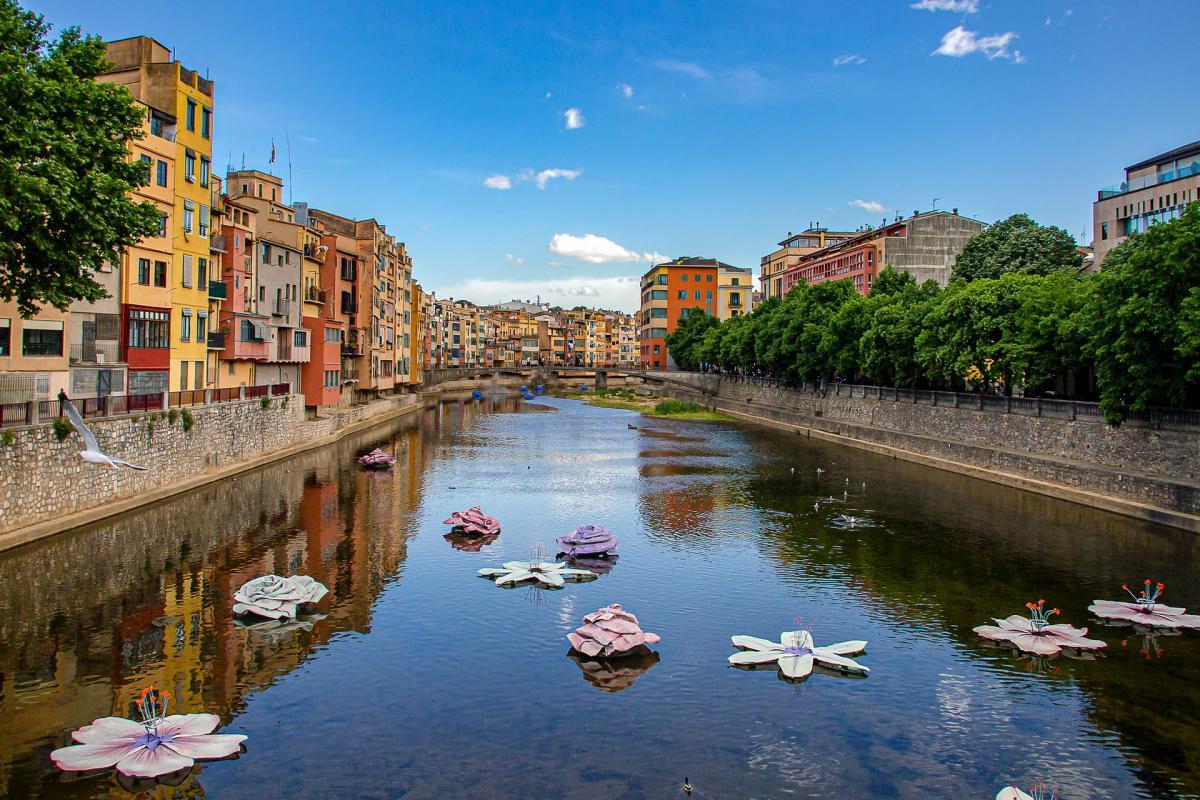
Girona
4. The industrial activity represents a fifth of Catalonia’s GDP
Very developed, especially around Barcelona, the industrial activity plays an important role in the grand scheme of Catalonia’s GDP. The industrial sector influences either directly or indirectly half of the region’s economy.
The main industrial sectors are food, motor vehicles, energy, pharma and chemicals. Catalonia is leading in several other sectors, like 3D printing, connected vehicles and robotics.
5. The capital of Catalonia is Barcelona
Barcelona is one of the most famous cities in Europe, as well as one of the most visited ones (the 4th one). That is because the Catalan culture is very unique and universal, just like the history and the architecture.
It is well known for the Sagrada Familia and its wonderful (though artificial) beaches.
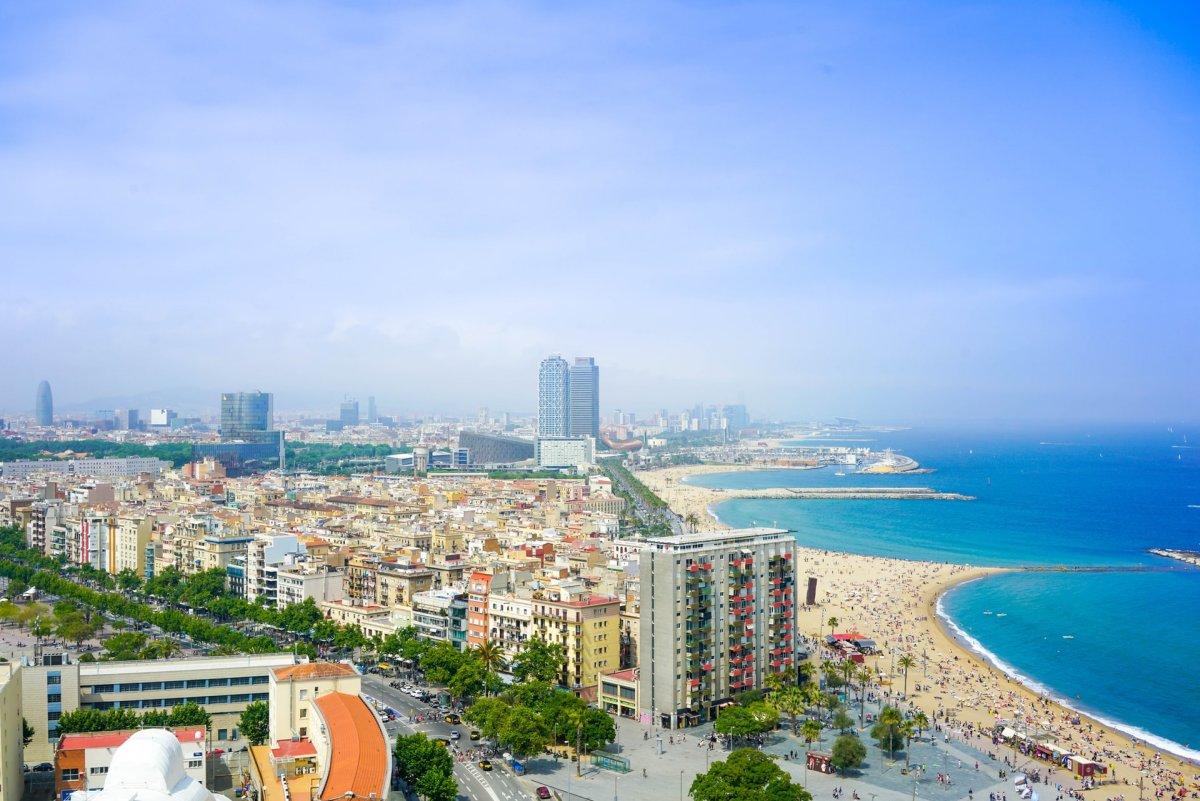
Barcelona
6. Catalonia is a very touristic region
Both trade and tourism are very important to the region in terms of GDP. Tourism represents 12% of the Catalan GDP and has become so important over the past years that it is now one of the three major economic activities.
Barcelona and its region receive more than 19 million tourists every year, thus being one of the most visited places in Europe.
7. Almost a quarter of Spain’s tourists visit Catalonia every year
In fact, to put this into perspective, among all tourists who visit Spain every year, almost a quarter of them decide to go to Catalonia.
There are several very interesting features of the region. In Catalonia, you can visit both the sea and the mountains, which are not that far apart (approximately 2 hours by car). Also, the Catalan cuisine is delightful, and the region has an important history and culture.
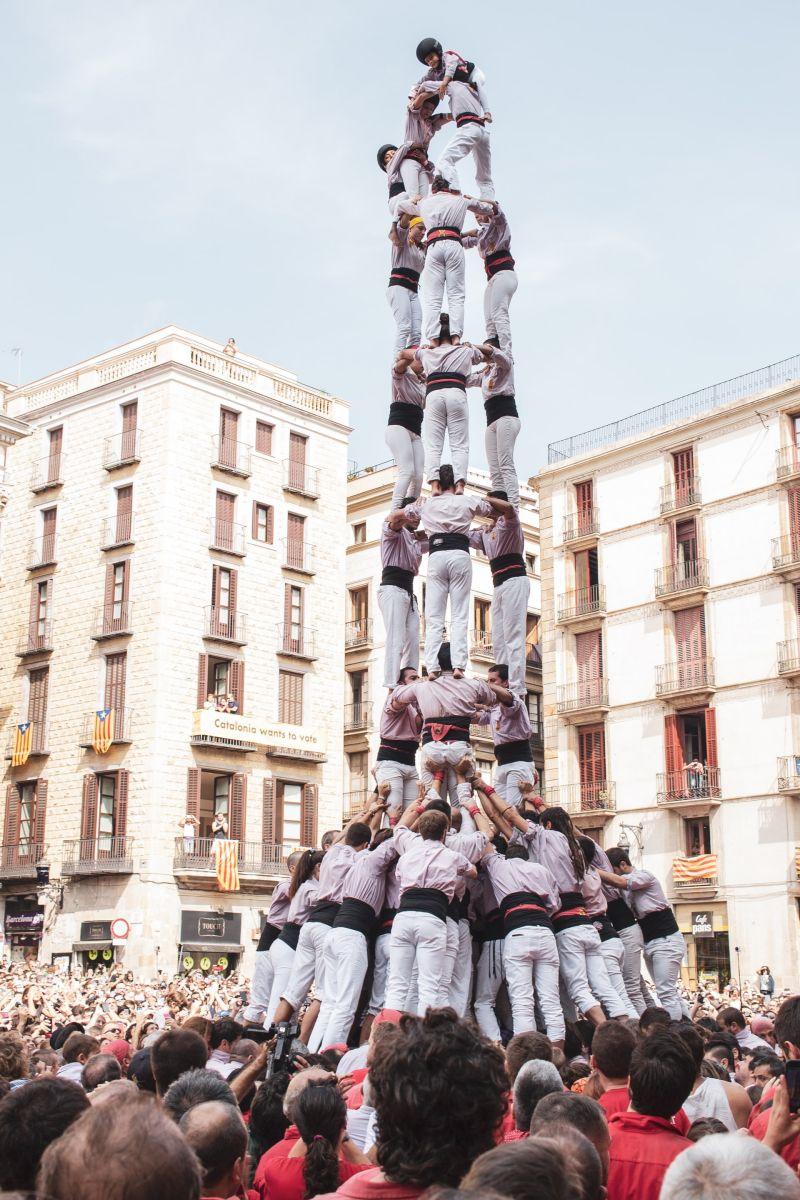
Catalan Castell traditionally built at festivals
8. Salvador Dalí was from Catalonia
Everyone has heard of Salvador Dalí at least once. He was a famous Spanish surrealist artist with a very eccentric personality. He was born in Figueres, Catalonia in 1904.
He was very renowned for his extremely precise work, his technical skill and most importantly his bizarre work. Dalí’s majorly known work is “The Persistence of Memory”.
9. Antoni Gaudí is another famous artist from Catalonia
Renowned architect Antoni Gaudí is yet another fantastic artist that was born in Catalonia, in Reus. He died in Barcelona at the age of 73 after being hit by a tram, but left us the amazing Sagrada Familia.
In fact, seven of his works were classified as UNESCO World Heritage Sites. Because of his faith, he was nicknamed “God’s architect”.
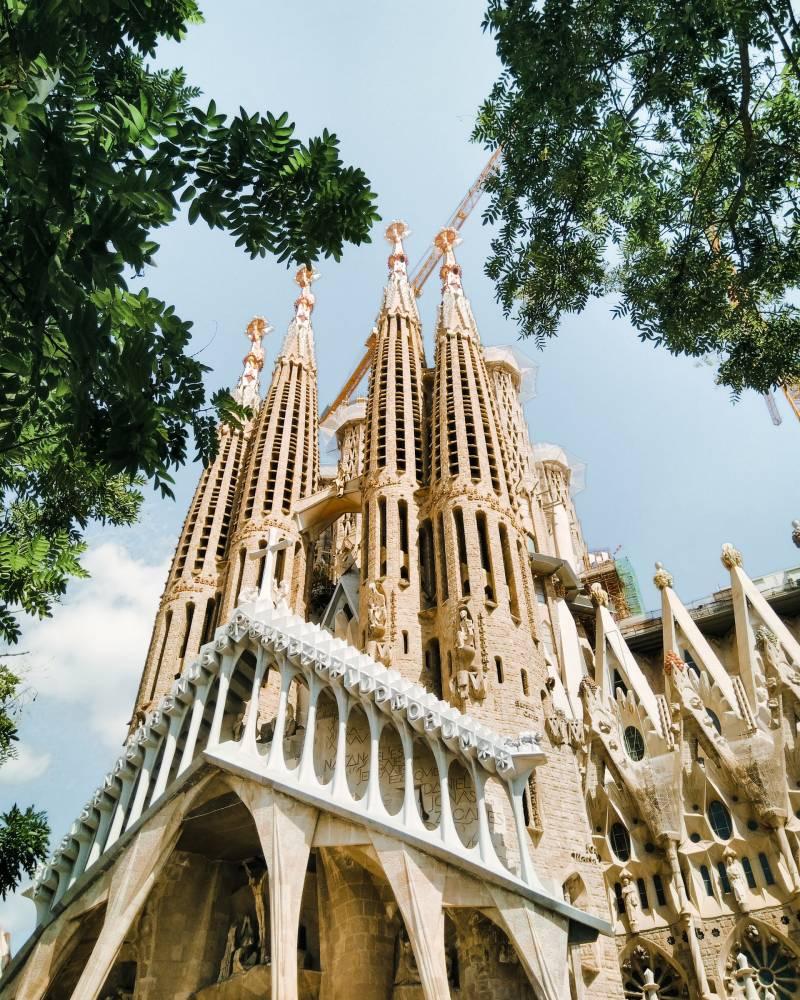
10. Catalan was banned by the Francoist dictatorship for almost 40 years
During 36 years, from 1939 to 1975, Francisco Franco ruled Spain as a dictator. After leading the Nationalist forces to overthrow the Second Republic of Spain during the Civil War, he established the infamous Francoist Spain.
His regime did everything they could to surgically remove Catalan from Spain, and they banned it in schools and public administration, issuing harsh penalties to everyone who used it.
11. Catalonia created its own Atlas: the Catalan Atlas
Created in 1375, the Catalan Atlas is a masterpiece of Middle Ages maps. It has been in fact declared the most important one of them all.
Originally, it was made of six leaves folded vertically. They were painted with lots of colors, like gold and silver. The Atlas was made of texts, illustrations and, of course, maps.
12. The healthcare system in Catalonia is one of the best in the world
Some countries, like the United States, have little to no healthcare system. Some others, like France, have a good healthcare system. Catalonia’s healthcare system is among the best in the whole world!
Barcelona is a pillar of innovation in terms of technology and medical care. There are over 10,000 patients that come from overseas just to get a treatment from one of Barcelona’s top-quality facilities.
13. Education is very important in Catalonia, and offers a very wide range of schools
No wonder why so many people like to live in Catalonia. On top of having an amazing healthcare system, education is also very developed there.
The school system is efficient and offers international programs, with more than 720 schools. There are 12 universities and 35 international schools in Catalonia, and Barcelona hosts some of the most prestigious business schools in the world.
Read more: Discover more about education in Spain
14. Arabic did not have a huge influence on Catalan, unlike Spanish
In Spain, the Moors were in control for more than 700 years. They came from the South of the country, seized the area and helped it grow amazingly quickly, especially in architecture and agriculture.
While Spanish was heavily influenced by Arabic (it still has a long list of loanwords to this day), Catalan was barely altered.
15. Since 1833, the Catalan Renaissance helps the language become more important
Not only was Catalan shut down during the Francoist dictatorship, but because of its complicated history and status, it saw a huge decline during the 17th and 18th century.
However, the publication of “Ode to the Homeland” by Bonaventura Carles Aribau was a huge step for Catalan. Thanks to him, the “Renaixença” (“Renaissance”) of the language started, and many fantastic literary works have been published in Catalan. It is still ongoing to this day.
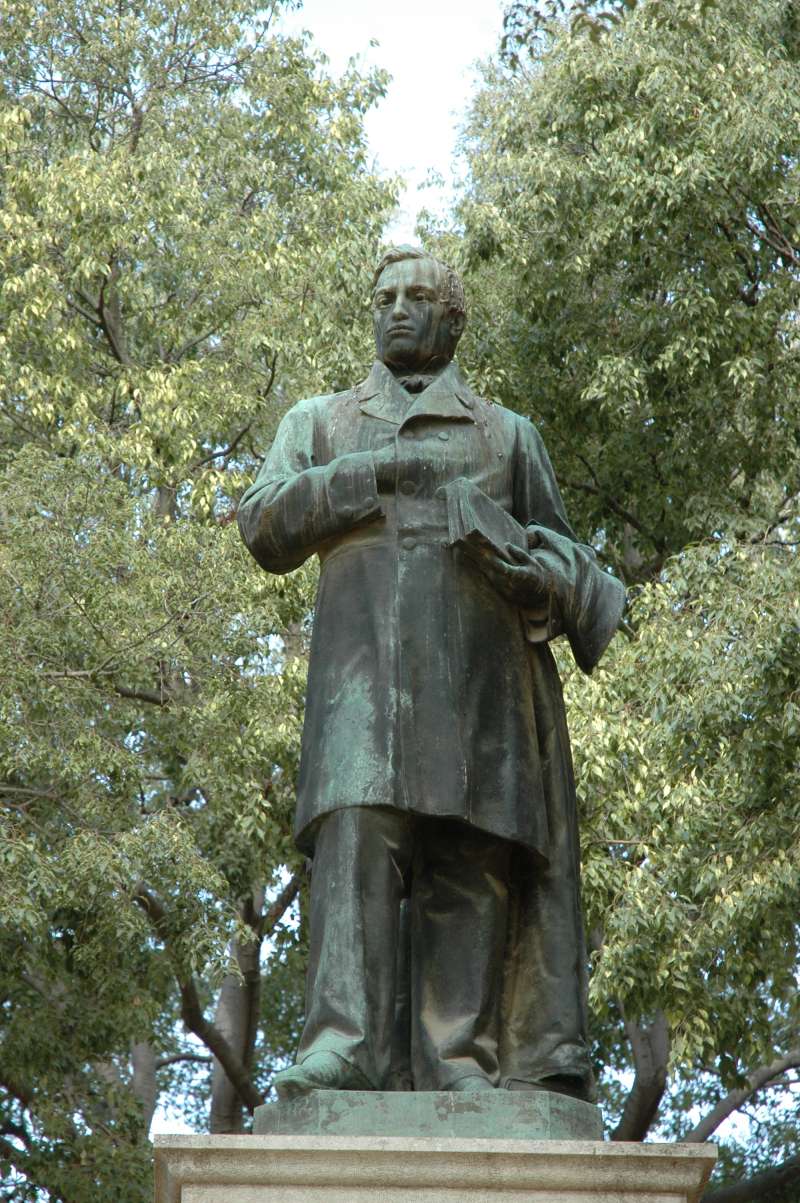
Josep Renalias / CC BY-SA / Bonaventura Carles Aribau
And that’s it for the general facts about Catalonia! Let’s discover the fun facts about Catalonia now!
Catalonia Fun Facts
Every place has some unusual and funny facts to share, and now I want to talk to you about the ones in Catalonia. I have gathered 10 of them, enjoy:
16. Teachers, doctors and public sector workers have to know how to speak Catalan according to the law
As one of the official languages, Catalan has a sizable influence on the region, which has some… very specific laws.
One of them states that if you are working in either the education sector, the medical sector or the public sector, you are required to know how to speak Catalan!
17. Catalan is not spoken only in Catalonia
This is probably by far the most unsettling fact of today’s list. Catalan is the emblem of Catalonia, and it could be even more renowned than the region itself. It is such a core part of the Catalan identity that it seems weird it could be spoken elsewhere.
Well, in Valencia, Andorra, the Balearic Islands and Aragon, you can also speak Catalan!
18. There is a special Catalonian event where people dress as devils
“Correfoc” (which means “run-fire”, literally) is a traditional Catalonian event. This celebration sees many performers dressing as devils.
On top of that, there are also lots of fireworks, as well as dancing to drums. You can also see theater in the city, whose goal is to recreate the duel between good and evil.
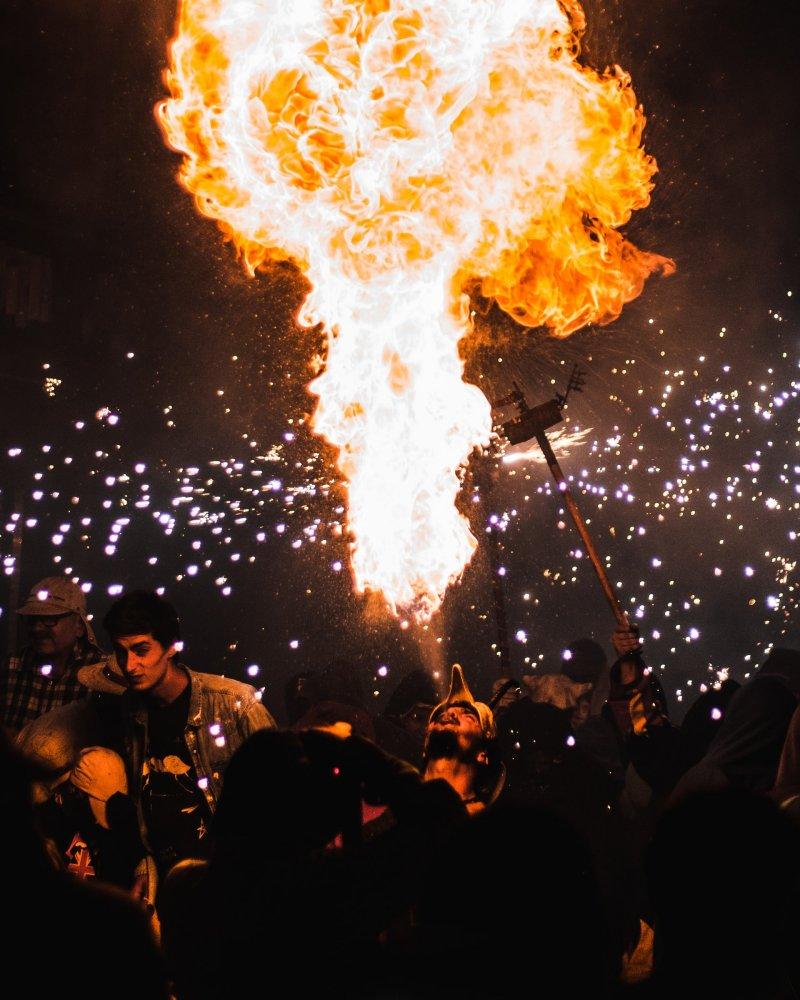
19. Catalonia was the first region to ban bullfighting
Bullfighting is one of the most iconic and controversial traditions in Spain. It consists of a bullfighter trying to subdue and sometimes kill a bull, according to certain rules and cultural traditions. There are some variations of this practice all around the world, but it is best known in Spain.
As a sign of protest against this tradition, Catalonia decided to ban bullfighting in 2010, becoming the first region to do so.
Read more: Discover more about bullfighting in Spain
20. Catalans do not celebrate Valentine’s Day like most of the world
You could have heard of Saint George’s Day in Barcelona. In fact, this tradition is common to the whole region of Catalonia.
Catalonians do not hand out roses or chocolates on February 14th, but celebrate it on April 23rd. On this day, they give each other roses and books, celebrating the Saint Patron of Catalonia.
21. George Orwell volunteered to fight against Franco’s Nationalists
In his work “Homage to Catalonia”, George Orwell depicts his volunteering experience in the Marxist Party.
The horrifying reality of the front in Barcelona is presented in a passionate manner. Orwell was convinced that the revolutionary cause was a good one to fight for. He presents Barcelona during those harsh times as a utopia.

Cassowary Colorizations / CC BY/ George Orwell
22. Catalan is officially not a dialect of Spanish, but an entire language
Most people believe that Catalan is a dialect of Spanish, because it is mostly spoken in one precise region, though a bit more spread than other dialects.
However, Catalan is, officially, a whole language. When Romans conquered the area, Latin was spoken all around the place. Catalan then developed itself independently of Spanish, and is now spoken by around 9 million people.
23. Catalan is more complicated than you think
When you think of a language you might think of some dialects to it. Though Catalan is not a universal language, it still has a staggering number of six dialects!
In Alghero, there is Algherese. In the Balearic Islands, Balearic. In Roussillon (Southern France), Rousselonese. In Barcelona, Tarragona and Girona, Central Catalan. In Lleida, Northwestern Catalan. And finally in Valencia, Valencian.
24. There is a National Day dedicated to Catalonia
On September 11th, in Catalonia, everyone is celebrating “La Diada Nacional de Catalunya”, the National Day of Catalonia.
It is an official national symbol, though Catalonia is not a country. This day commemorates the fall of Barcelona in 1714. That meant the loss of Catalan constitutions and the establishment of absolutism. On this day, people hoist flags and offer flowers.
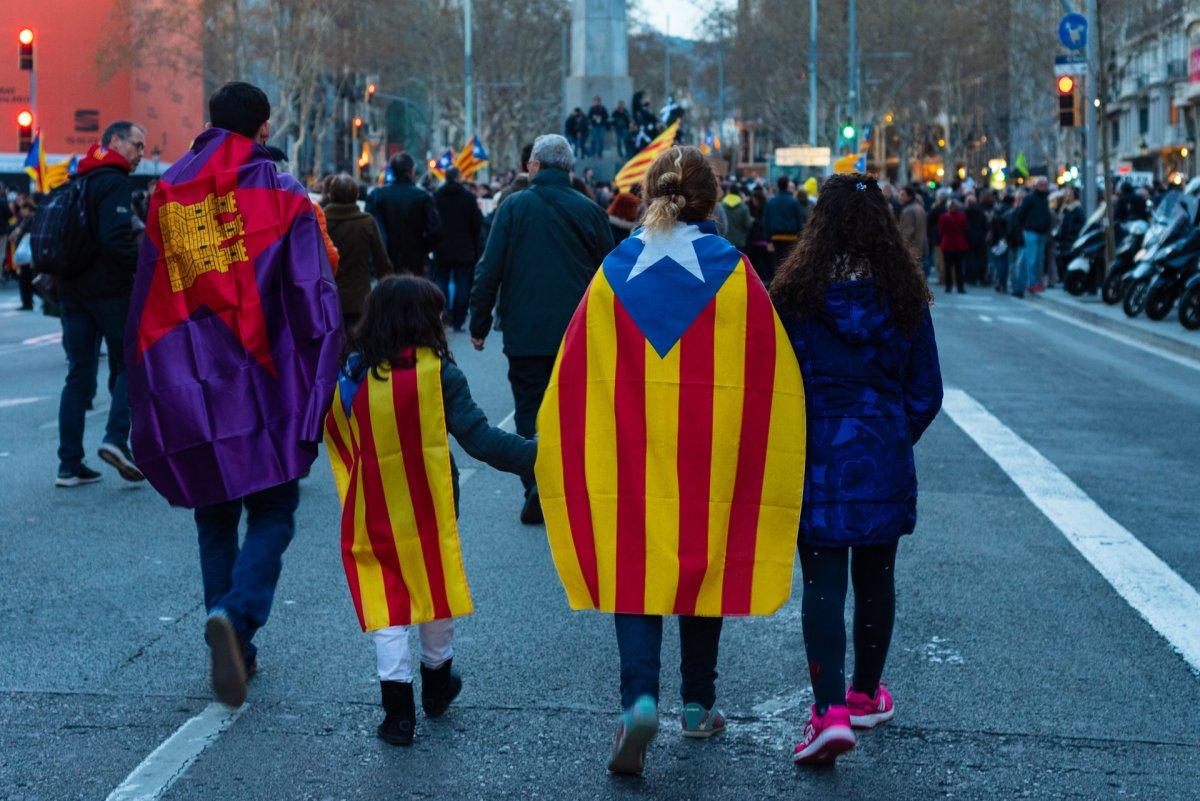
25. The circular dance of sardana is very famous in Catalonia
A famous dance in Catalonia is “sardana”. It consists of a large group of people dancing in rhythm in circles.
It was so famous that during the 1992 Olympic Games opening ceremony, it was put on display for the whole world to see. The proud people of Catalonia made a huge impact that day and their traditions, culture and uniqueness have been recognized since then.
So there you have them, the 25 interesting facts about Catalonia, Spain! I hope you enjoyed every one of them, and if you want to learn more general information about either Catalonia or Spain as a whole, feel free to keep reading:
General Facts of Catalonia
You’ll find below a few general facts of Catalonia, to learn more about this Spanish region:
- Name: Catalonia (English) / Catalunya (Catalan) / Cataluña (Spanish)
- Land area: 32,108 km² / 12,397 sq mi
- Population: 7,725,000
- Name of inhabitants: Catalan / Catalonian
- Website: Catalonia
Catalonia Flag
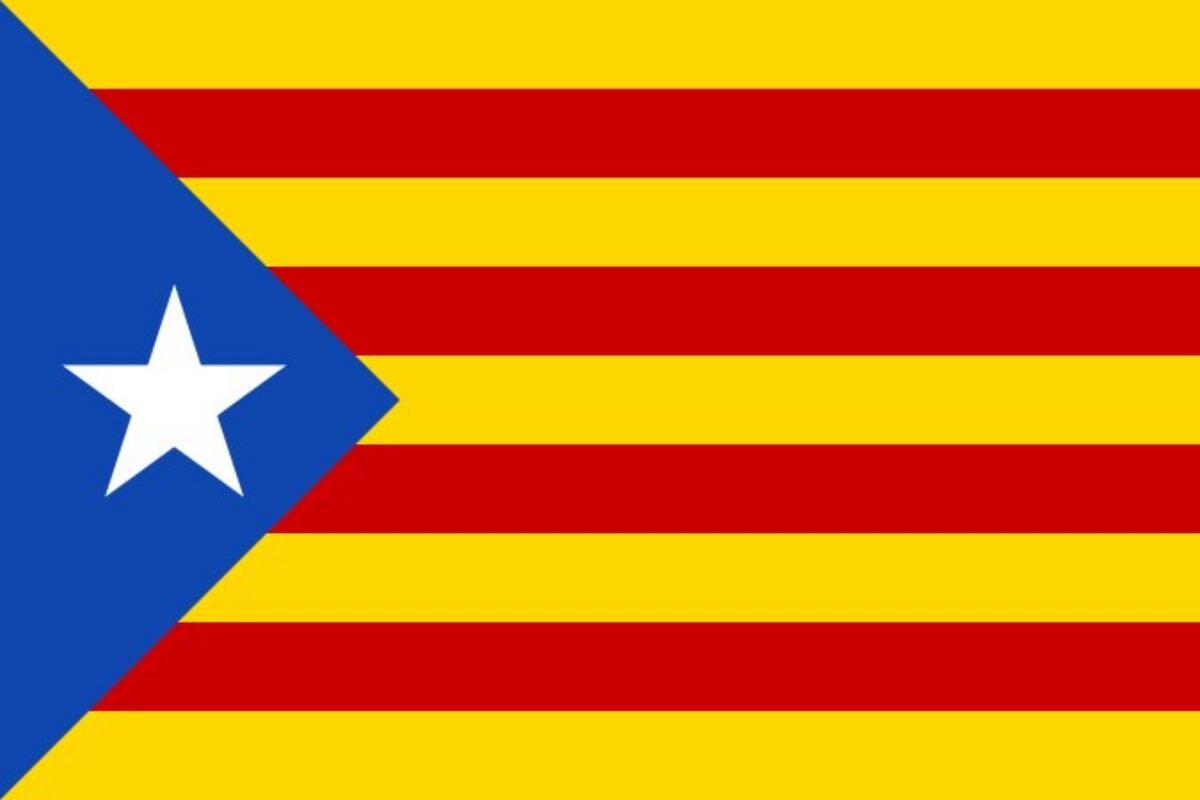
More Facts!
Do you want even more facts about Spain?
Well, I have more facts about Spain, I’m sure you’ll love reading them!
Here’s the main guide of the best Spain facts 👉 All the Facts about Spain
Check out these facts by city/region:
- Facts about Madrid
- Facts about Bilbao
- Facts about Barcelona
- Facts about Malaga
- Facts about Seville
- Facts about Granada
- Facts about Valencia
- Facts about Castilla la Mancha
Or these Spain facts by topic:
- Facts about Christmas in Spain
- Facts about la Semana Santa in Spain
- Facts about religion in Spain
- Facts about schools in Spain
- Facts about Spainish food
- Facts about the Spanish language
- Facts about bullfighting in Spain
- Facts about sports in Spain
- Facts about music in Spain
Or click here to see ALL the facts up on the blog! Spoiler alert: there’s A LOT of them.
The Full List of 25 Catalonia Facts
- Catalonia gathers over 16% of Spain’s population, with 7.5 million inhabitants
- There are three official languages in Catalonia
- Catalonia generates more than a fifth of Spain’s GDP alone
- The industrial activity represents a fifth of Catalonia’s GDP
- The capital of Catalonia is Barcelona
- Catalonia is a very touristic region
- Almost a quarter of Spain’s tourists visit Catalonia every year
- Salvador Dalí was from Catalonia
- Antoni Gaudí is another famous artist from Catalonia
- Catalan was banned by the Francoist dictatorship for almost 40 years
- Catalonia created its own Atlas: the Catalan Atlas
- The healthcare system in Catalonia is one of the best in the world
- Education is very important in Catalonia, and offers a very wide range of schools
- Arabic did not have a huge influence on Catalan, unlike Spanish
- Since 1833, the Catalan Renaissance helps the language become more important
- Teachers, doctors and public sector workers have to know how to speak Catalan according to the law
- Catalan is not spoken only in Catalonia
- There is a special Catalonian event where people dress as devils
- Catalonia was the first region to ban bullfighting
- Catalans do not celebrate Valentine’s Day like most of the world
- George Orwell volunteered to fight against Franco’s Nationalists
- Catalan is officially not a dialect of Spanish, but an entire language
- Catalan is more complicated than you think
- There is a National Day dedicated to Catalonia
- The circular dance of sardana is very famous in Catalonia
Share the knowledge! Click on the buttons below to share these facts with your friends, and help them learn more about the world 🙂
Pin this to Pinterest!
Enjoyed this guide? Then help a fellow traveler and pin it! They'll most definitely love you for it, 100% guarantee.
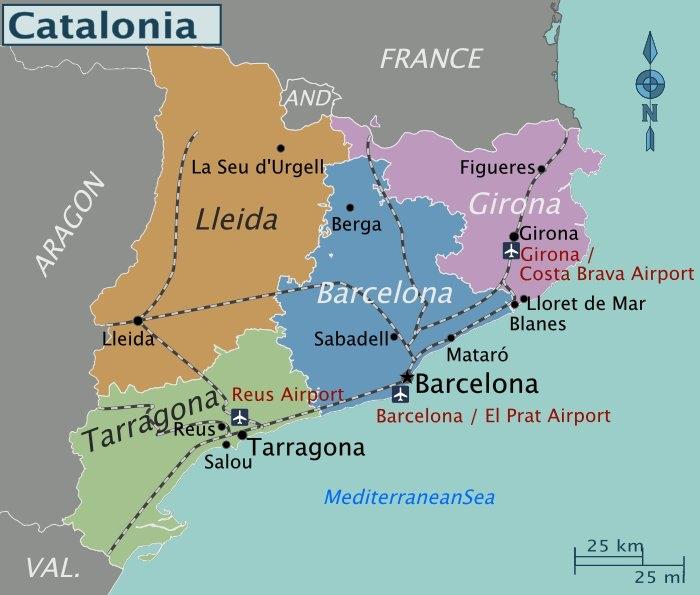
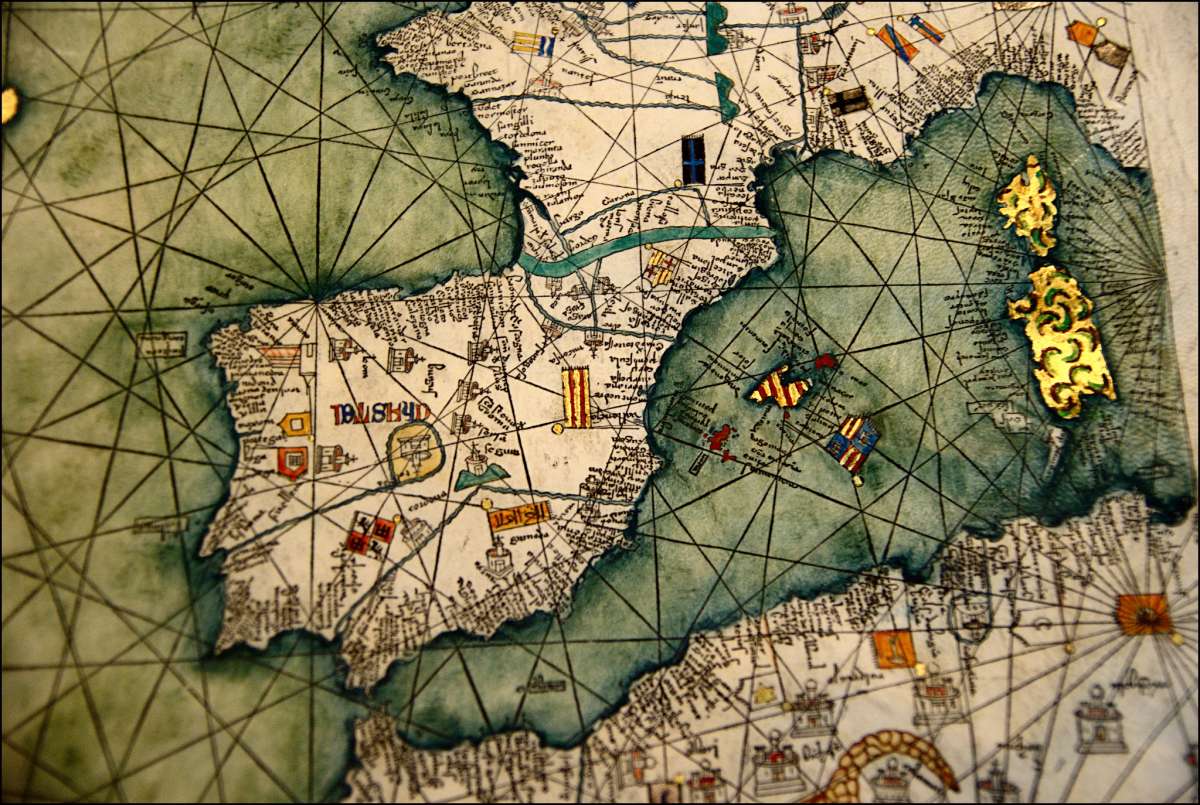

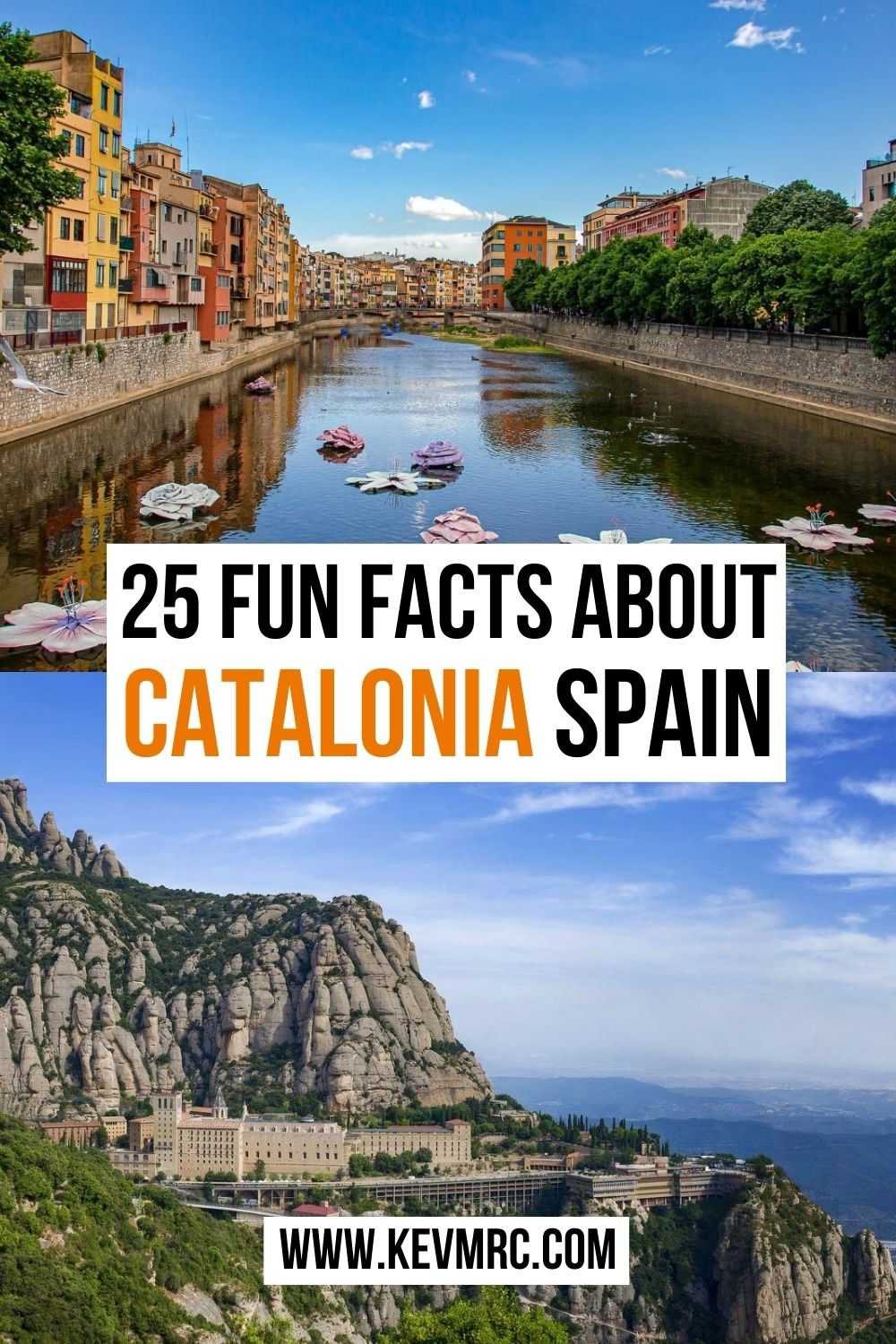

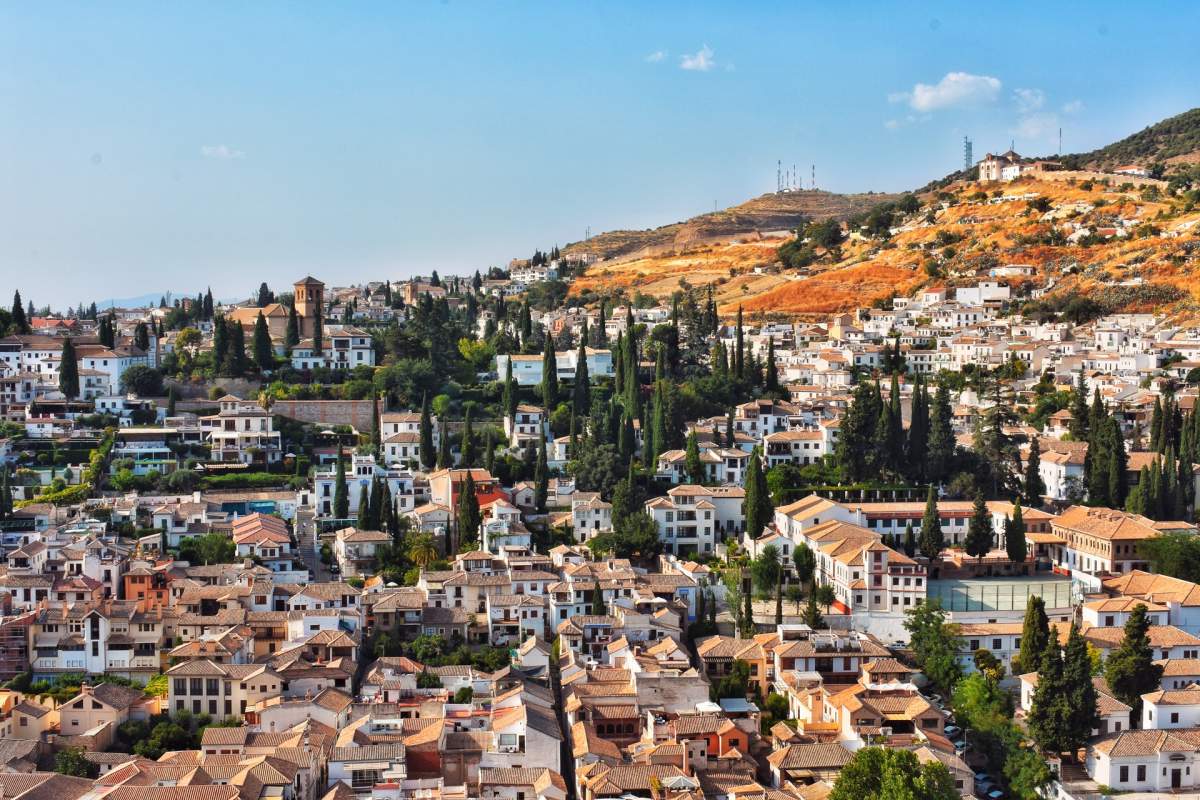
![12 Interesting Spain Religion Facts [100% true]](https://www.kevmrc.com/wp-content/uploads/2022/03/12-interesting-spain-religion-facts.jpg)
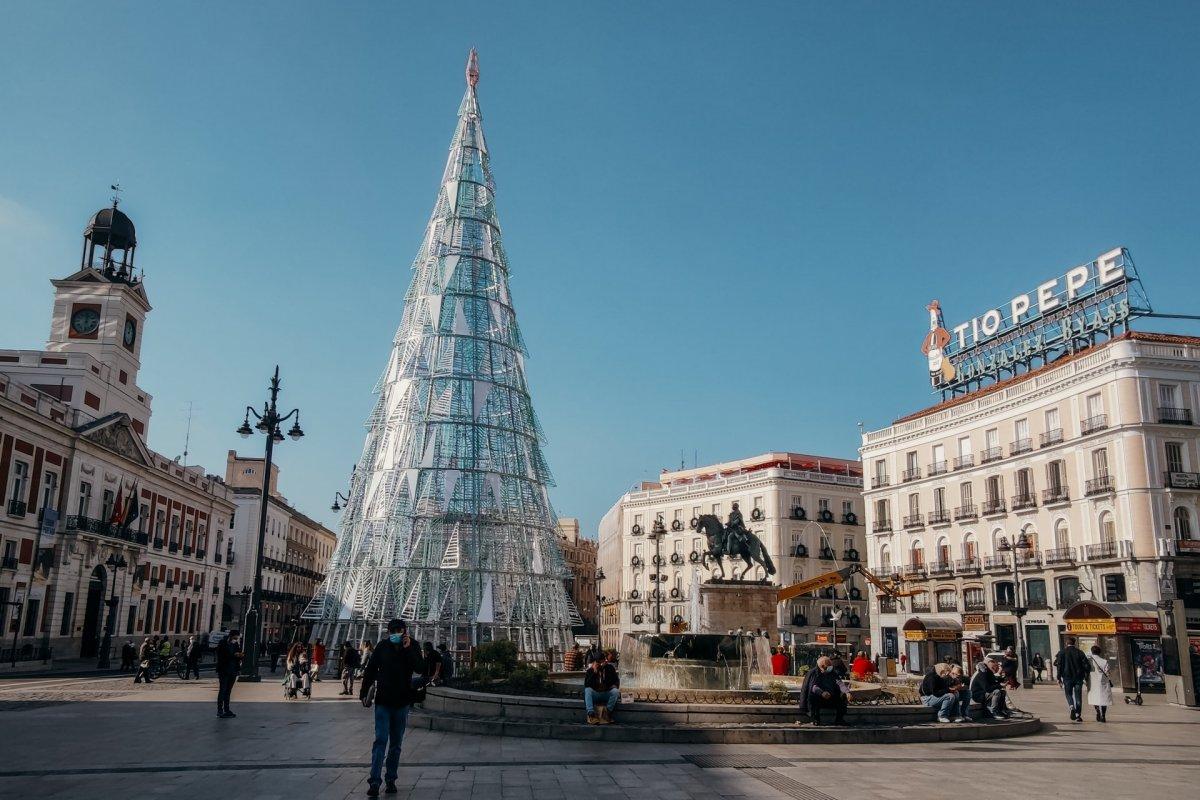
Normalment als correfocs no escupen foc de la boca, i això de la batalla entre good and evil, mai n’he vist cap. Una altra cosa, la bandera de Catalunya no és aquesta! La bandera de Catalunya es diu senyera (i no té una estrella blava). Heu posat l’estalada, la bandera catalana per la independència.